fluc / [dy‘na:mo] / Version 1
In and around fluc:
Producing Performative Situations of Art and Sound
The art and music venue Fluc at Praterstern Vienna tests out the possibilities for establishing artistic platforms and self-organized practices in public, beyond economic imperatives. An assemblage of containers in an L-shape flanks the entrance to the underground passage which transforms into a concert and dance floor. With this lowgrade Fluc- Wanne (tank), Fluc operates as a venue for art, performance, sound, and club productions. Fluc is an event and project space run by artists Joachim and Sabine Bock and Martin Wagner, which has existed at the Viennese Praterstern since 2002 and stands for “fluctuated rooms.” Hence, the venue already appeals to the transferability and interaction of spatial, social, and semantic artistic practices. Fluc’s flexible concept of “forming” penetrates the dogmas of urban planning and seeks to activate the space’s emancipatory potential as well as non- hierarchical structures. Called „parcours accidentel“ by its architect, Klaus Stattmann, Fluc 2, which was newly opened in 2006, forms an area of conflict vis-à-vis the trend of well- planned social engineering, which increasingly focuses on controlling urban space. In contrast, the motto here is: Trust to chance! Producing performative situations is not only relevant for architectural endeavors and the investigation, through participation, of the individual’s spatial agency, but also plays an important role in art and sound production. Ursula Maria Probst, Walter Seidl, and Martin Wagner have curated art shows at Fluc such as Fluctuated Images (2002 – 2004), Fluc in Exile (2005), Transformer I (2005), Artmapping I-II (2007), In der Kubatur des Kabinetts (2008), and Art’s Reaction on Urban Signs (2008). In these pro- jects, artists such as VALIE EXPORT, Sejla Kameric, Grübl & Grübl, Sanja Ivekoviç, Esther Stocker, tat ort, Katarina Matiasek, Roman Ondak, Rita Vitorelli, Flora Neuwirth, and [dy‘na:mo] have realized installations which openly deal with performative, interventionist, or socio-political art practices. Permanent interventions, spatial interferences, and extensions spread across the Fluc containers out to the stylized shopping malls of the revitalized square in front of Vienna North train station. This, as well as the artistic work on the facade fronting the public space – all this constitutes the praxis of the everyday at Fluc. These manifestations of aesthetic, acoustic, and real experiences allow arti- stic strategies to penetrate urban event space, and lead to a critical understanding of the reterritorialization of urban spaces for action and interaction within the artistic field. Fluc 2, which was opened with a sound performance via laptop and guitar in 2006 by Christian Fennesz, musician and avant-garde pioneer of the Clicks’n’Cuts genre, focuses again on electronic and experimental music. Fennesz is known for his Indie Rock experiences with the band Maische as well as his inclination for guitar-based samples and abstract, beat-driven Electronica mixed with Minimal Techno and Dark Ambiance. He is one of the most innovative musicians of the electronic music scene, as shown for instance in his collaboration with Ryuichi Sakamoto. New impulses regarding the trans- cultural and a critique of representation are offered by Turner prize winner Martin Creed in his sound intervention Fuck Off, within the frame of the larger project Disposition (2006), organized by Manfred Grübl. In Creed’s work, the critical moment of emotional decision- making has been embedded in the sound performance. The artist Elisabeth Grübl, me- anwhile, uses sound as plastic, malleable material, which selectively attracts various body parts and zones of the sensory apparatus. Stimulation with sinusoidal sonic impulses can lead to amplified opto-acoustic emissions in the ear. Elisabeth Grübl has perfected elect- ronic sound production in that respect. The artist group [dy‘na:mo] aims for a better expe- rience of sound for listeners who move around in soundscapes produced by a multi-channel technique and in doing so become part of a dynamic system of information exchange. A soundscape does not only entail the acoustic manifestation of space, but is also the result of interpretation by its listeners. [dy‘na:mo] are Fluc owners Joachim Bock and Martin Wagner as well as the mastermind of the [dy‘na:mo] sound system, Martin Moser. The experiment with architectural space and the dissemination and movement of sound via as many as sixteen speakers are some of the fixed moments of [dy‘na:mo]’s electronic sound performances. Space and the speed of moving sound become some of the most essential categories for producing sound. The group’s sound installation Moving Landscape does not produce interfering image or sound samples but creates a light effect through fluorescent tubes, which is complemented by the sound compositions. Through the swelling and ebbing drone effects and minimal frequency modulations, the electronically generated on-and-off pulses of the tubes enter into a dialogue, which can be followed in an installation mounted in 2008 in the entrance to Fluc-Wanne. The interest in drones lies in their constitutive indifference, as an energy field where typical musical dichotomies of subjectivity time versus form, movement versus standstill, interact alongside the conflict between analogue and digital production mechanisms. Moments of flotation can be seen in the tinfoil installation Excess: Six Seconds to Read this Sentence (2006) by the artist Female Obsession. The installation runs along the glass façade of Fluc and addresses potential consumers. All of these performative interventions in and around Fluc function as a social space for communication in relation to the conflicting zones of media and performance.
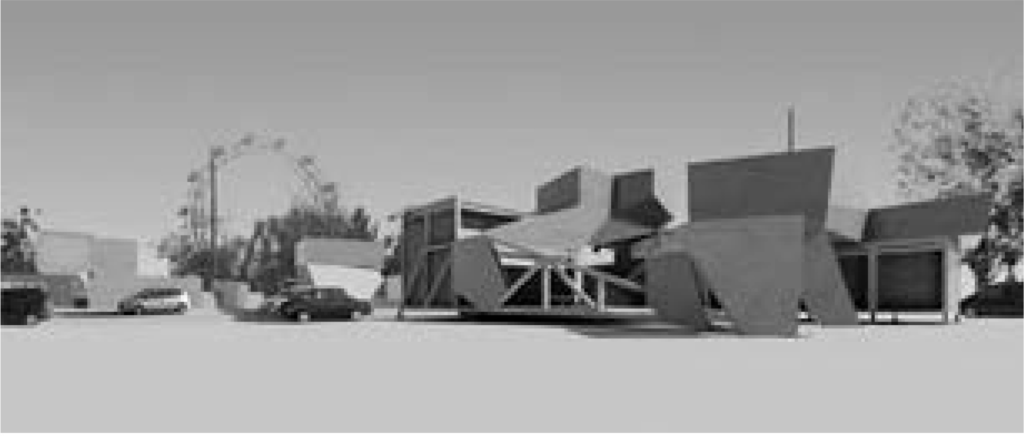
Klaus Stattmann / fluc study / 2005
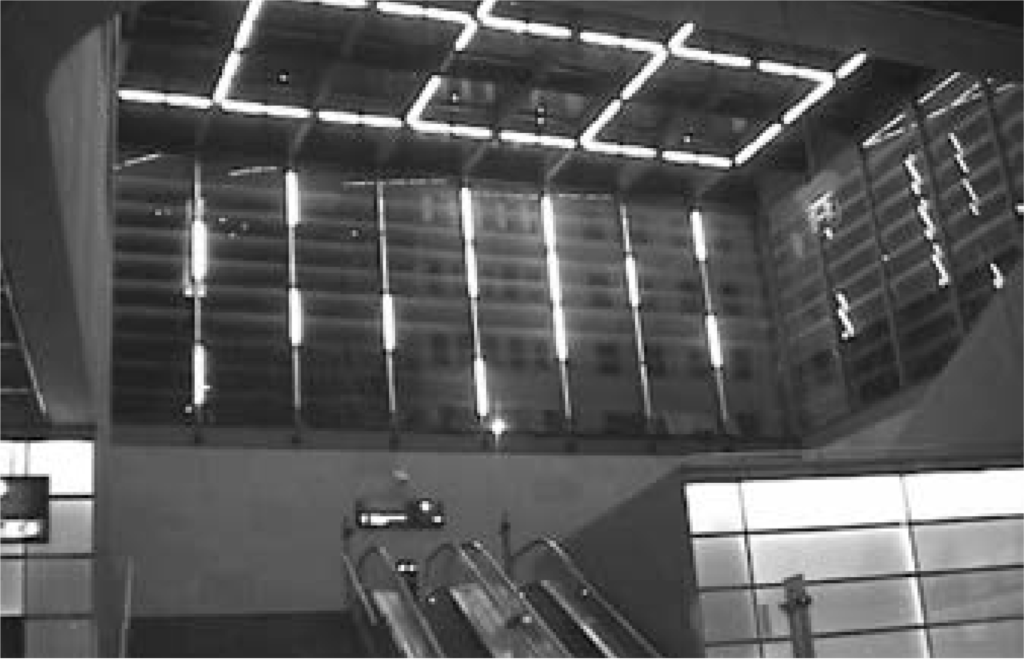
dy‘na:mo / Moving lightfield 01 / 2006
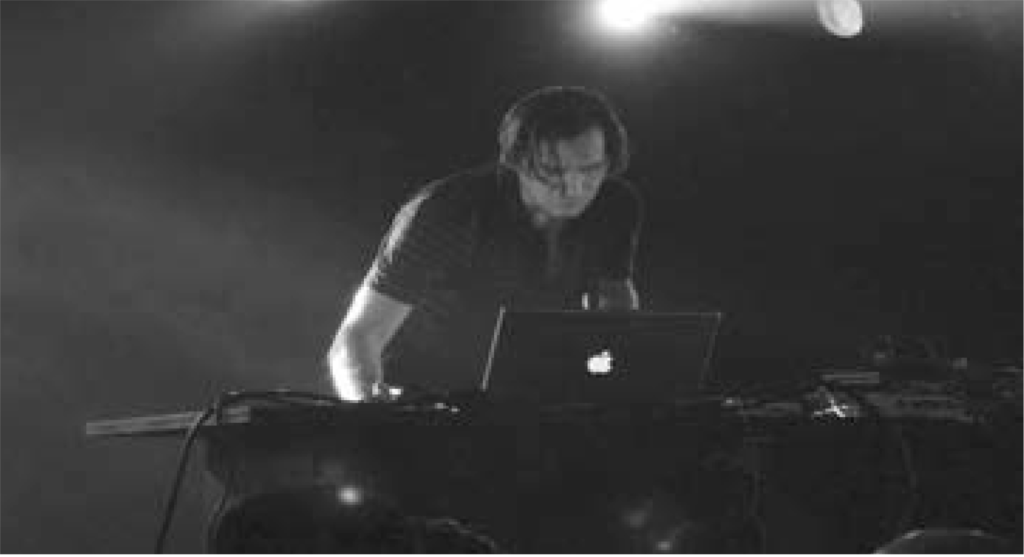
Fennesz/ 2007
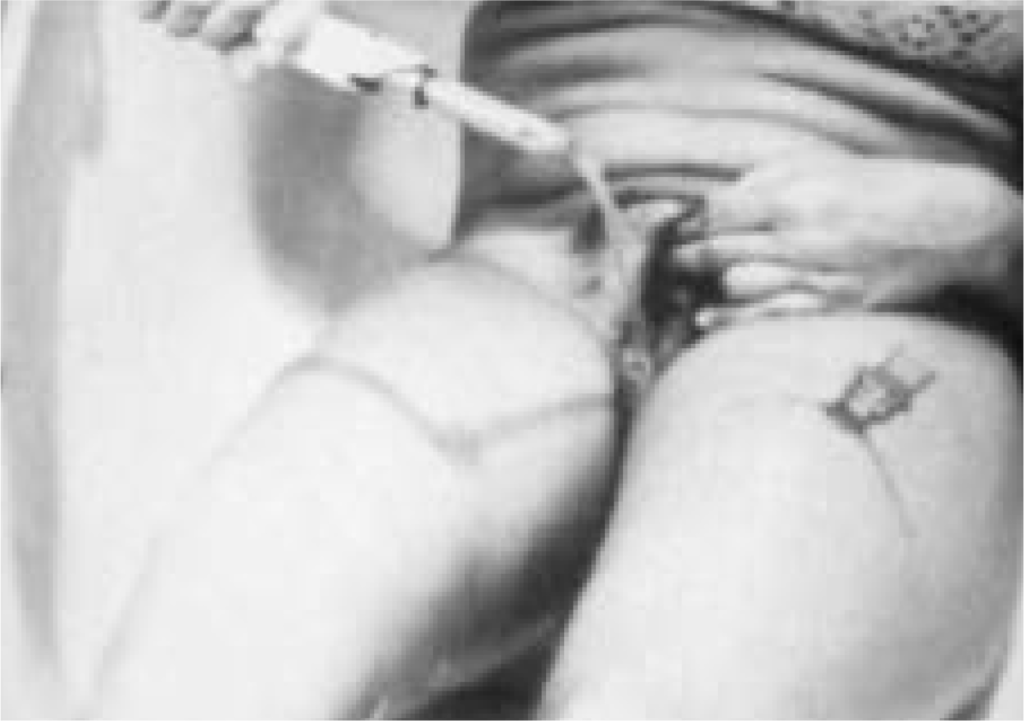
VALIE EXPORT / Man&Woman&Animal / 1970-73
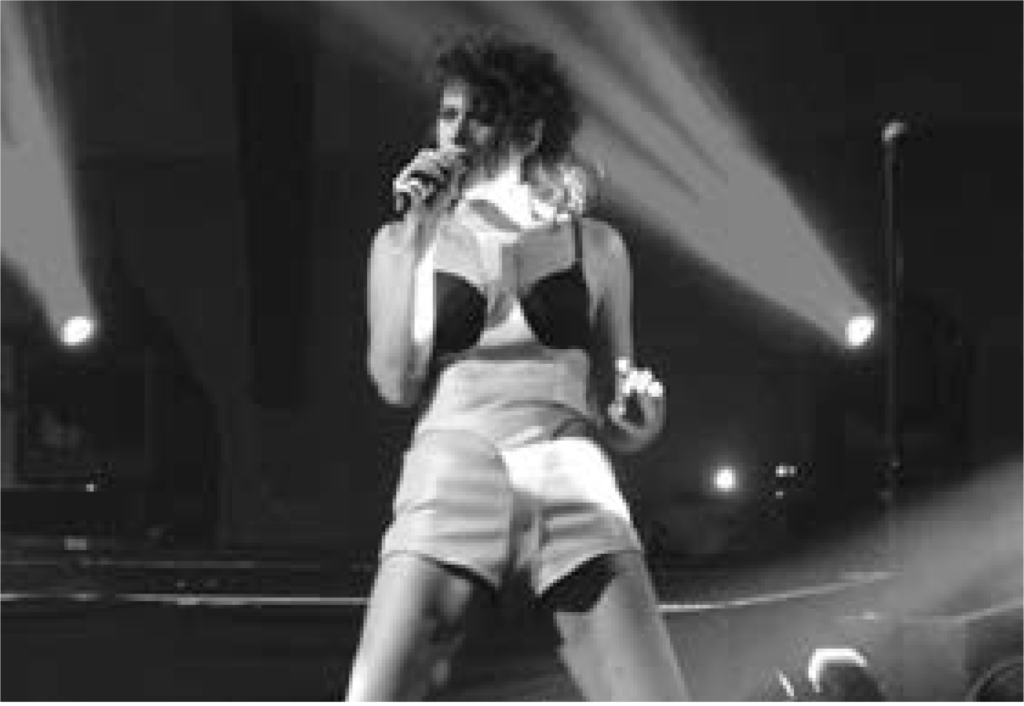
Peaches / DJ-Set / 2008
